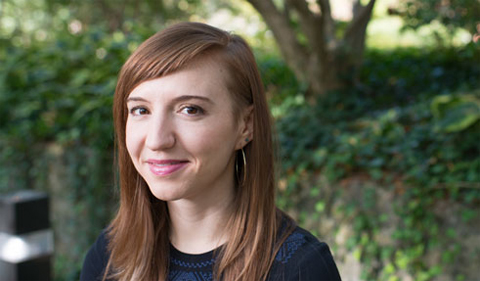
Sarah Minor, doctoral student in creative writing
by Kristin M. Distel
Sarah Minor, doctoral student in creative writing, contributed a quilt square to a project called Unstitched States, a digital collection of artwork and squares that, as Minor explains, “Each have their own message.”
The quilt features the work of writers and artists from all over the country.
The creators of Unstitched States describe the project as “A digital quilt. A testament to the principles of equality and dignity. A record of and reaction to our U.S. in 2017; a piecing together of our future.”
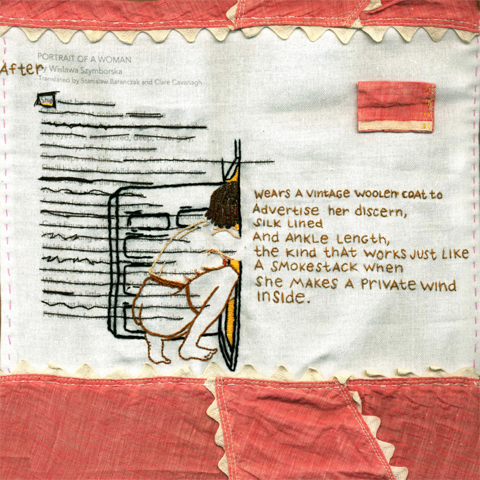
Feminist Art and ‘Subtle Subversion’
As a nonfiction writer and feminist scholar, Minor was interested in creating a quilt square that interrogates the way in which the female body is viewed and criticized. Her square, which features an original drawing by Minor, crosses out yet keeps visible lines of Wislawa Szymborska’s poem, “Portrait of a Woman.”
Erasure is, Minor explains, a hallmark of women’s artistic renderings. “Writing in forms that are not linear is related to the subtle subversion that has always existed in mediums historically practiced by women.”
The square also includes several lines of Minor’s own writing.
“Essentially,” Minor says, “I’m embroidering over Szymborska’s words and creating a new layer of meaning. Erasure in embroidery doesn’t actually erase but overlays. Every feminist movement builds on previous movements but also wants to remove some elements of what came before. That, too, is similar to embroidery.”
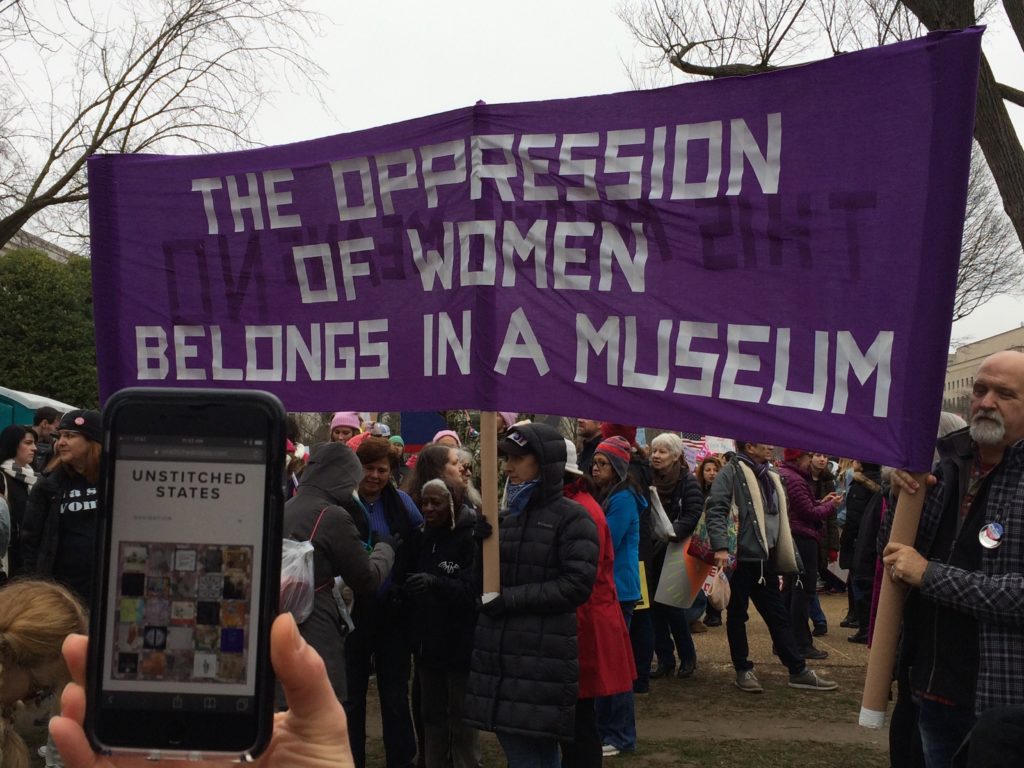
Editor Gretchen Henderson “took” the digital quilt to the Women’s March in Washington, D.C.
The square measures eight inches by eight inches. “Embroidery takes so much longer than I remembered,” she notes. “I worked from scratch, not from a pattern. Embroidering my square took almost all of winter break.”
Minor’s square considers the physicality of women’s bodies and criticizes the presumption that they must embody perfection. “Being a woman is sometimes considered a vulgar thing,” Minor says.
“Vulgarity is also associated with idea that the female body must be covered up. I want to challenge the idea that women and women’s bodies are responsible for the morality of their society.”
Aiming for a Broad Audience
Minor states that Unstitched States does not target a specific audience or political issue. Rather, she notes, its purpose is to promote “Inclusiveness, common space, and shared hopes, not necessarily to react against the 2016 presidential election.”
Regarding her own contribution to the quilt, Minor states that her square “would be most relevant to other feminists who have thought about that tension between vulgarity and women’s bodies, and most productive or subversive for those who have never thought about it. I’m imagining my own father, for example, as a viewer of my quilt square. I think small shocks can often be a prompt for productive conversation.”
Becoming Involved in Unstitched States
Interested artists are encouraged to submit their own work to the ongoing project. Contributors’ quilt squares are continually scanned and then digitally added to the website that, Minor notes, will “allow the quilt to grow outward.”
The digital quilt project, which was released on Martin Luther King Junior Day, is edited by Allison Dalton and Gretchen Henderson. Henderson coordinates the Kenyon Review Writers Workshop, which emphasizes literary hybridity and book arts.
Minor was a student in this workshop in 2014, which ultimately led to her being part of the Unstitched States project.
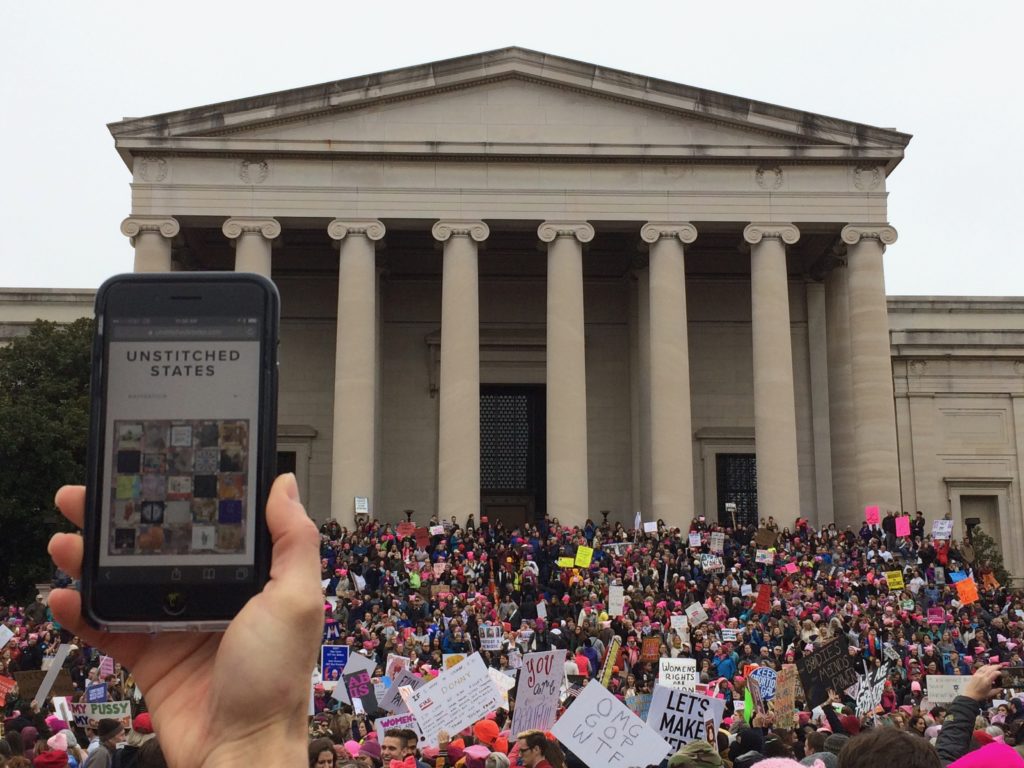
The digital quilt made an appearance at the Women’s March in Washington, D.C.
Receiving Support for Her Work at OHIO
Minor’s idea for her quilt square grew out of her work in Dr. Jill Rosser’s poetry workshop.
“What I like about the writing department at OHIO is that in many cases there is an openness to visual writing.The department is open to writers as working artists who are engaged with politics and asking questions in a multimedia format. That type of work is not always accepted as ‘real work’ in writing programs,” Minor explains.
She also finds that the Unstitched States project has informed and improved her teaching. As a graduate student in the English Department, Minor teaches both composition courses and nonfiction writing workshops.
“A rhetorician would say that I take a multimodal approach to my teaching,” she notes.
“But the visual is present in all areas of our lives—screens, books, posters, tweets. Imagery has always been integral to our language, so it is natural and pedagogically sound to bring images and multimedia images into the classroom. Students may not know it, but they have the skills to write this way, and it’s exciting when they unlock that potential.”
“The Purpose Is to Consider Other Ways of Being”
What Minor especially wants to emphasize about this digital quilt project is its universality. “The editors were looking for a response that is inclusive and open, and that expresses constructive thought at this moment in time. It’s not political rhetoric; the purpose is to consider other ways of being.”
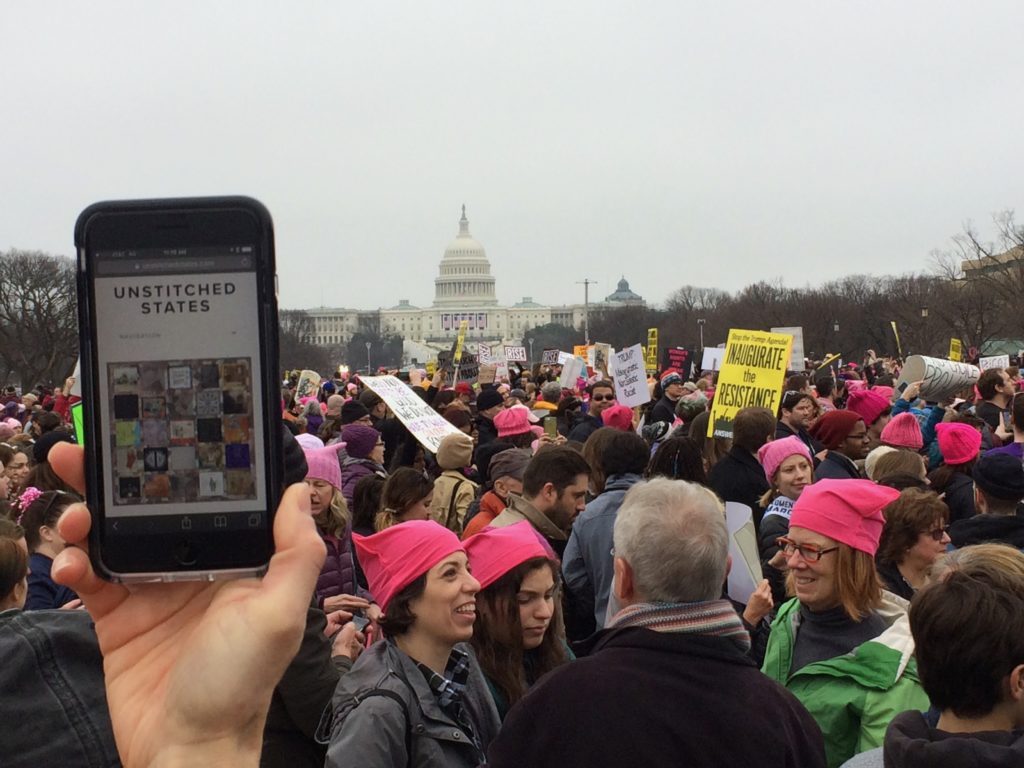
“Unstitched States” among the Women’s March protestors
Minor’s work has appeared or is forthcoming in The Normal School, Passages North, and the Object Lessons series from The Atlantic.
Her book, “The Persistence of The Bonyleg: Annotated,” won the 2015 Essay Press Chapbook Contest. You can see more embroidered works from her twitter handle @sarahceniaminor.

















Comments